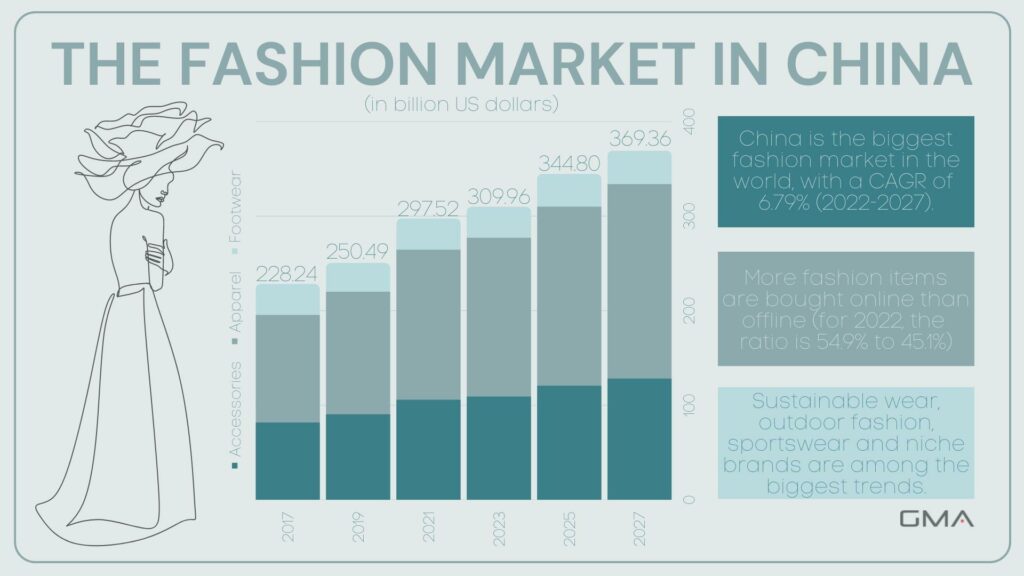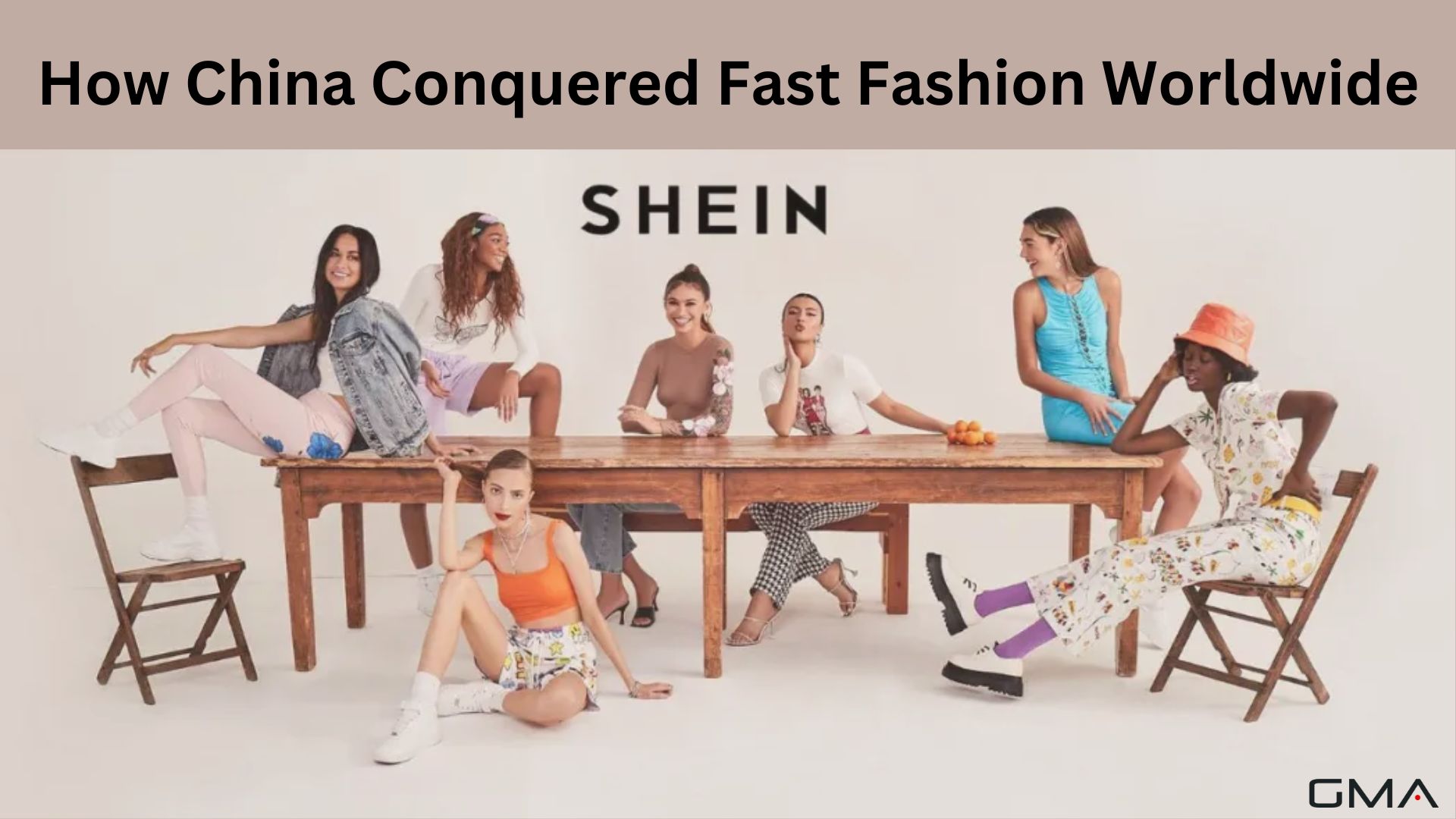Fast Fashion is a term you’ve probably heard more times than you can count, especially with the meteoric rise of Shein. Just like most of us, I was also intrigued by how this Chinese brand became a global powerhouse in such a short time, wildly generating an astounding $23 billion in revenue in 2022 alone.
This article unravels Shein’s fast-fashion conquest worldwide, underscoring its business model, marketing strategies, and the controversies surrounding it. Stay tuned as we explore how Shein reshaped what we thought we knew about the apparel industry!
Key Takeaways
- Shein, a Chinese brand, has become a global powerhouse in the fast-fashion industry by using a two-sided platform business model that connects clothing factories in China with millions of customers worldwide.
- Shein’s success can be attributed to its low prices, fast delivery options, and strategic expansion into global markets, particularly in America where it is popular among Gen Z shoppers.
- However, Shein’s fast fashion model raises concerns about its environmental impact, labor rights issues, and ethical implications. The company has faced accusations of pollution, overconsumption, exploitative labor practices, intellectual property thefts from independent designers, and cultural appropriation.
- Despite these concerns and increasing demand for sustainability and ethical practices in the fashion industry among consumers who prioritize eco-friendly choices over fast fashion trends, Shein recognizes the importance of addressing these issues and has started taking steps toward sustainability initiatives while acknowledging the need for greater transparency and supply chain visibility.

The Rise of Shein as a Fast Fashion Giant
Two-sided Platform Business Model
Shein uses a two-sided platform model. It acts like the middle person in a big market. On one side, you have clothing factories in China. Around 6,000 of them! These factories make many trendy clothes every day but face issues while trying to sell on Amazon Marketplace. They find it hard to reach customers there.
On the other hand, you have millions of people from all over the world who love fast fashion and want new trends at low prices. Shein links these two sides together. The model works just like Amazon’s global sourcing approach.
It lets buyers see lots of products from different sellers and pick what they love most. This variety is what helped lift Shein high in the fast fashion industry so quickly!
Expansion Into Global Markets
Shein’s growth into markets outside China is a big part of its story. In fact, it’s now the biggest fast fashion e-commerce platform that trades between countries. A lot of this success is in America, where Gen Z shoppers love Shein.
The way Shein does business helped it grow all over the world. It works much like Amazon, selling goods online to buyers anywhere. This lets it match what factories can make with what shoppers want to buy.
Low Prices and Fast Delivery
Shein doesn’t make customers wait long or pay a lot. Shoppers love the low prices and quick shipping. This direct-to-consumer (DTC) model lets Shein give great deals. Much like Taobao, another brand known for value, Shein keeps costs down to win over budget-minded buyers.
This smart way of doing business has let China take a big part in the fast fashion world.

The Impact of Shein’s Fast Fashion Model
Latest Environmental Concerns
The environmental concerns surrounding Shein’s fast fashion model are significant. The fashion industry, including brands like Shein, is the second biggest polluter in the world. This means that the production of clothing contributes to pollution, overconsumption, and waste.
Fast fashion brands like Shein promote a culture of buying more clothes at lower prices, leading to excessive waste and disposal problems. Additionally, the production of fast fashion items requires a large amount of water, resulting in water wastage and pollution.
These environmental issues highlight the need for sustainable practices within the fashion industry as well as consumer awareness and demand for ethical fashion choices.
Labor Rights Issues
Shein’s fast fashion model has raised concerns about labor rights as a manufacturer. There have been allegations of exploitative labor practices, unethical manufacturing methods, and poor working conditions within the company’s supply chain.
The issue of sustainability is also a concern, with accusations of child labor exploitation and forced labor in China. These allegations have put the fast fashion industry under scrutiny, including Shein.
Congress has even questioned Shein about its alleged use of forced labor, although the company denies having any suppliers in the Xinjiang region and claims zero tolerance for forced labor.
Reports have suggested that the company relies on cheap labor in countries with weak labor regulations, including potential instances of modern slavery. The working conditions in these factories to produce kid’s, men’s, and women’s clothing have also raised concerns regarding worker safety and welfare.

Ethical Implications
The ethical implications of Shein’s fast fashion model are concerning. First, Shein has been accused of stealing designs from small independent labels, which is a violation of intellectual property rights.
This undermines the hard work and creativity of these designers. Additionally, Shein has faced backlash for selling offensive merchandise that promotes cultural appropriation and disrespect towards marginalized communities.
These actions raise questions about the company’s commitment to ethical business standards.
Moreover, despite being a major player in the fast fashion industry, Shein has not shown sufficient efforts towards sustainability initiatives. The production processes involved in fast fashion contribute to significant environmental damage due to overconsumption and waste generation.
As consumers become more aware of these issues, there is an increasing demand for sustainable fashion options.

Shein’s Dominance in the Fast Fashion Industry
Overtaking Traditional Top Brands
Shein has made a big impact in the fast fashion industry by overtaking traditional brands like Nike, Adidas, Zara, and H&M. It has become the most-googled clothing brand, surpassing even these well-known names.
With its low prices and fast delivery options, Shein has disrupted the market by offering cheaper and faster alternatives to customers. Its influencer marketing strategies and strong social media presence have also contributed to its dominance.
Influencer Marketing Strategies
Shein’s dominance in the fast fashion industry can be attributed to its effective influencer marketing strategies. The brand has successfully utilized social media platforms to promote its products and reach a global audience.
By collaborating with American fashion influencers and creators, Shein has been able to showcase their brand in a positive light. These partnerships have included visits to model factories in China, which have helped build trust and transparency with consumers.
The impact of Shein’s influencer marketing strategy has been significant. It has garnered both positive and negative reactions online, but overall, it has helped the brand gain a loyal following and establish itself as a dominant player in the industry.

Online Marketing and Social Media Presence
Shein’s dominance in the fast fashion industry can be attributed to its strong online marketing and social media presence. The company has mastered the art of digital advertising and uses various online promotion strategies to reach a wide international audience.
Shein heavily relies on social media platforms like Facebook, TikTok and Instagram to showcase its trendy fashion merchandise and engage with customers. They collaborate with influencers from around the world, leveraging their large followings to promote their brand.
By implementing these global marketing tactics, influenced by Chinese marketing strategies, Shein has achieved remarkable success in capturing the attention of consumers worldwide.

The Future of Shein and Fast Fashion
Shein’s future in the fast fashion industry appears promising, as the company recognizes the growing demand for sustainability and ethical practices. They have started taking steps to address environmental concerns and improve working conditions, indicating a willingness to adapt to consumer preferences.
However, with increasing awareness about the negative impact of fast fashion, it remains uncertain how long Shein and similar brands can continue their dominance without significant changes to their business models.

Conclusion
In conclusion, Shein’s rise to dominance in the fast fashion industry is a testament to China’s ability to conquer global markets. With its low prices, fast delivery, and savvy online marketing strategies, Shein has captured the attention of Gen Z consumers worldwide.
However, concerns about environmental impact and labor rights highlight the need for greater sustainability and ethical practices in the fast fashion industry as a whole.

